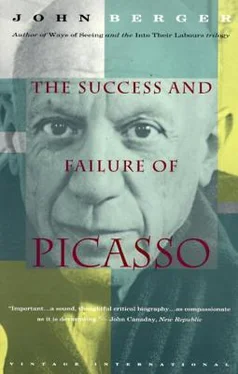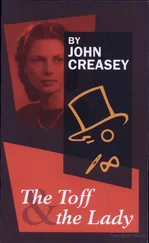In the Picasso, all metaphor and social idealism has disappeared. The scene is now portrayed entirely in terms of sensation. The distortions serve this end: one might describe them as tumescent — for the women with their small heads and expanding breasts represent very accurately the sensation of a woman to a roused man. The picture is made up of a series of urgent details. Only the grid of Poussin’s original composition saves it from becoming entirely fragmentary. Compare, for example, the woman riding on the goat in the two paintings. It is surprising how unplastic Picasso’s figure is. In the Poussin she simultaneously emerges from and belongs to all that surrounds her — like a fruit on a tree when you have already selected it with your eye, but not yet grasped it with your hand. That is what I mean by plasticity. But in the Picasso she is an assembly of separate parts — thigh, breasts, arm. Each part demands swift, separate, concentrated attention. It is now as though you were picking one fruit after another as your hand finds them, working so quickly that you can hardly notice the fruit in relation to the tree or to each other. This regression on Picasso’s part (regression because he has withdrawn from the complex and metaphorical to the basic and singular) need not, in principle, mean a decline in expressive power. On the contrary, it has allowed Picasso, in other pictures, to say things never before said with such intensity. The impatience is the impatience of appetite: the addition rather than the cohesion of the parts expresses the mounting strength of a physical desire or sensation. I know of no other works in any medium or art which force you, as the best Picassos of this period do, so irresistibly into another man’s or woman’s or creature’s skin. The effect is magical: it is as though we, looking at these figures, possess their sensations. I am this woman as she sleeps.
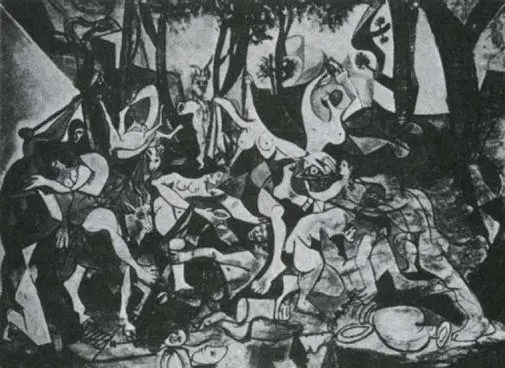
60 Picasso. Bacchanale. 1944
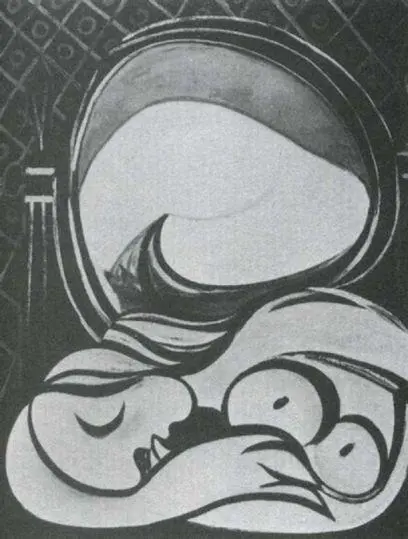
61 Picasso. The Mirror. 1932
I am this one as she cries.
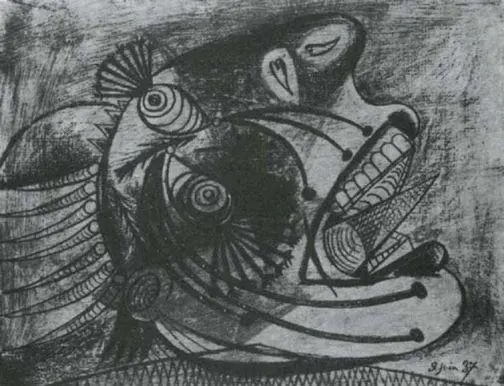
62 Picasso. Weeping Head. 1937
I am that woman as she turns to see me.

63 Picasso. Figure. 1939
Yet the condition of such identification is the rejection of all intellectual conventions and systems. The displacement of the parts of the body is the visual counterpart of this rejection. It is as though we are brought so close to the sensation portrayed that the minimum distance needed for self-consciousness is denied. This is why the question: What does this picture mean? is almost unanswerable. Or at least the answer will at first sound like nonsense: it means being it.
Picasso’s contribution to our culture through works like these is very considerable. He has made us aware of sensation as no other artist has done, and has extended the language of painting so that it may express this awareness. But such works depend for their significance on what they appear to undermine and destroy. Without Poussin, Picasso would not make sense. The distortions only count for us because, unlike children or animals, we can recognize and exactly measure them as such. Our awareness of physical sensation, as communicated by a work of art, is in fact dependent upon a very high level of self-consciousness. Picasso himself must have realized this creative dialectic: these works, apparently so free, are acts of homage to the European tradition of drawing. Every displacement is still startling. Each destruction is made for a specific creative purpose. One can feel the tension of the daring. Such work is like the boldest surgery.
After 1944 the tension began to go. The vertical invader became sentimental. The road by which he had invaded and conquered he now offered as an escape route. He issued invitations to Arcadia. Sensations are very near to pain. So sensations disappeared. Idealizations and jokes took their place. Picasso began to play Pan — as fathers play Father Christmas for their children. It wasn’t that he lost his integrity. It was simply that he no longer knew what to do, and those who might have helped him, failed him. He was left with the most human and, for a modern artist, a most dangerous wish — the wish to give pleasure. And so it was that Picasso became institutionalized:
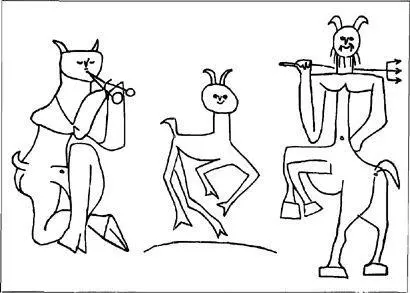
64 Picasso. Triptych. 1946

65 Picasso. Joie de vivre. 1946
Picasso’s Arcadia is very unlike the traditional Arcadia in European painting. Compare Joie de vivre with, for example, Bellini’s Feast of the Gods. The difference is not only one of style. The traditional Arcadia represents an idealization of the contemporary world. Bellini’s serving maids are not even country girls — let alone primeval creatures: they are sophisticated Venetian beauties. The men, in their expressions and attitudes, have all the sensibilities and weaknesses of rich courtiers. What Arcadia really means here is an ideal day in the country. Jean Renoir’s film of Une Partie de campagne is in the same Arcadian tradition — though it concerns modern Parisians. Picasso’s painting does not fit into this tradition. It makes no reference to the contemporary world, and ignores any development of knowledge or feelings. In the very broadest sense of the term it is unconcerned with culture. Its gaiety and vitality are of the kind which precede knowledge. Man and animal are still undifferentiated. And yet — and this is why it begins to be sentimental — the method of painting, the way of drawing is extremely schematic. It is a painting, not about sensations — which do indeed bring us very close to animals — but about an idea : the idea that we would all be happier if we had no ideas.
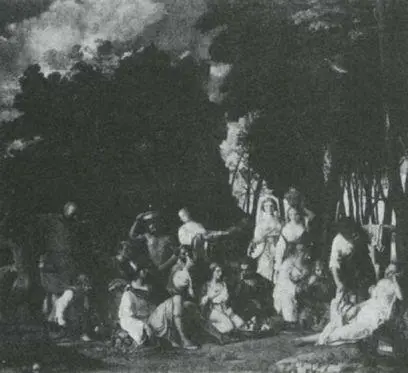
66 Giovanni Bellini. The Feast of the Gods. 1514
Other things could be said about this painting. As a kind of complement to its sentimentality, it also has wit. It works quite well as a decoration. But now more exaggeratedly and less consistently — Picasso chooses the primitive, the archaic.
He first made such a choice as a direct criticism of what he saw around him. An element of criticism still exists. In 1946 Joie de vivre affirmed life, even if of an excessively innocent kind, in the face of a terribly war-scarred Europe. But now, from the age of sixty-five onwards, Picasso’s imagination begins to gravitate naturally towards the archaic. An attitude, once consciously held, has become a cast of mind.
Thus, in 1951, when Picasso painted Massacre in Korea , the effect is almost the opposite of what he intended. The soldiers, despite their sten-guns, are so heraldic and archaic that either we lose the sense that this is a modern massacre, or else we consider the soldiers as symbols of an eternal, unchanging force of cruelty and evil. Either way our indignation, which the painting was meant to provoke, is blunted.
Читать дальше
